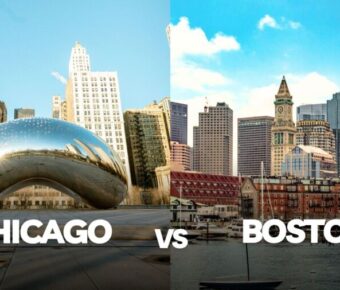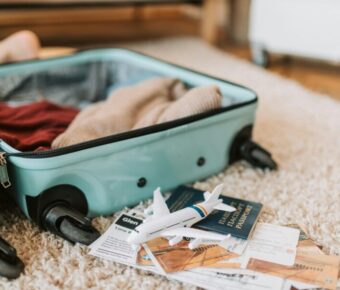
Cross Country Road Trip Cost Under $1000 in 7 Days
Planning a cross-country road trip can be an exciting adventure, but you need to know what it might cost. You might be wondering how much money you’ll need to save up for this epic journey. A typical cross-country road trip in the USA can cost between $2,000 to $3,000 per person for a 2-3 week trip. This range covers the basics like gas, food, and lodging.
Your exact costs will depend on a few things. How long you’re traveling, where you stay, and what you eat all play a big role. Camping and cooking your own meals can help you save money. Staying in hotels and eating out will cost more. Don’t forget about entrance fees for national parks or attractions you want to see along the way.
Planning ahead can help you stick to your budget. Look for free campsites or budget-friendly motels. Pack some snacks and plan for some meals on the road. With some smart choices, you can have an amazing cross-country adventure without breaking the bank.
Contents [show]
Key Takeaways
- Plan your route and budget for gas, food, and lodging costs
- Look for ways to save money like camping or cooking your own meals
- Don’t forget to factor in costs for attractions and activities along the way
Planning Your Road Trip Itinerary
A well-planned itinerary is key to a fun and budget-friendly cross-country adventure. Let’s break down the steps to map out your perfect road trip.
Choosing Your Destinations
Start by listing must-see spots on your cross-country journey. Mix big cities with small towns and natural wonders. San Francisco and New York City are popular picks, but don’t forget hidden gems in between.
Think about including:
- National parks (get a pass to save money)
- State parks for cheaper camping
- Quirky roadside attractions
- Historic sites and museums
- Scenic drives like Route 66
Be realistic about how many places you can visit. Quality time beats rushing through a long list of stops.
Calculating Mileage and Drive Time

Map out your route using Google Maps or a road trip planning app. These tools help you:
- Estimate total mileage
- Calculate driving times between stops
- Find gas stations and rest areas
Don’t plan more than 6-8 hours of driving per day. You’ll want time to explore and stretch your legs.
Build in buffer days for unexpected delays or discoveries. A flexible schedule lets you take that scenic detour or spend an extra day somewhere special.
Budgeting for Attractions
Research costs for activities at each stop. Many places offer free or low-cost options:
- Walking tours
- Public parks and beaches
- Free museum days
- Scenic overlooks
For paid attractions, look for combo tickets or city passes to save money. Some national parks have free entrance days too.
Set a daily activities budget. Mix pricier experiences with free options to stay on track. Sometimes the best memories come from simple pleasures like a picnic with a great view.
Accommodation & Lodging

Finding affordable places to sleep is key for keeping your cross-country road trip costs down. You’ve got options ranging from free camping to budget hotels that can fit any travel style and wallet.
Camping and Outdoors Accommodations
Camping is often the cheapest way to sleep on a road trip. Many national forests and BLM land offer free dispersed camping, though you’ll need to be self-sufficient. State and national park campgrounds usually run $15-30 per night. Private campgrounds cost more but offer amenities like showers and electricity.
For a step up in comfort, look into yurts, cabins, or glamping sites. These can range from $50-150+ per night. Don’t forget to pack essentials like a tent, sleeping bags, and a camping stove to save money on accommodations and meals.
Boondocking (free camping in undeveloped areas) can slash your lodging costs to zero. Just be sure to follow Leave No Trace principles and check local regulations.
Booking Hotels and Airbnbs
When you need a real bed, budget hotels and motels are your friend. Chain hotels like Motel 6 or Super 8 often have rates under $70 per night. Book through Booking.com to compare prices and snag deals.
Airbnbs can be cost-effective, especially for longer stays or if you’re traveling with a group. You might find entire apartments for $50-100 per night. Vrbo is another good option for vacation rentals, often with more space than a hotel room.
Pro tip: Book accommodations with kitchens or at least a mini-fridge to save on food costs. And don’t forget to factor in parking fees when staying in cities.
Staying With Friends or Family
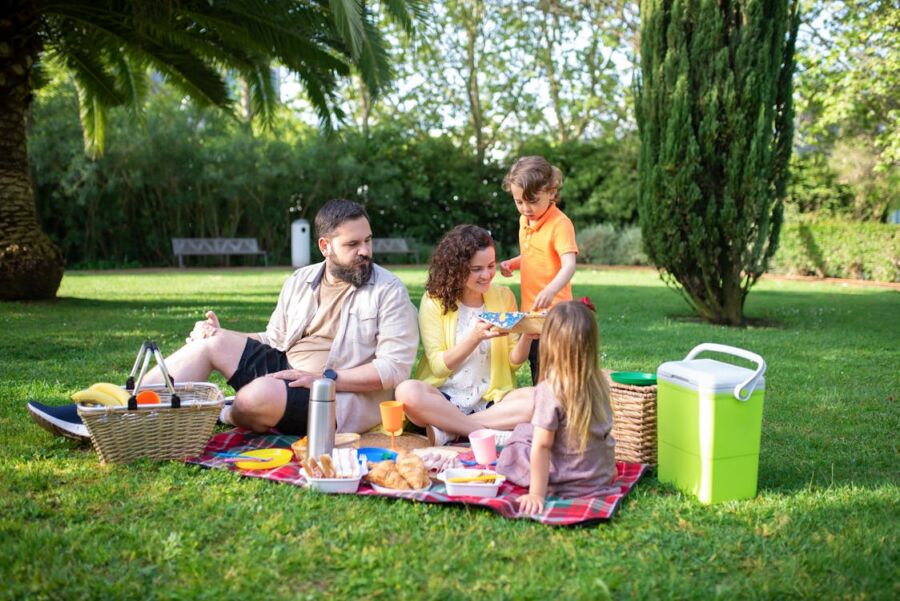
Got buddies spread across the country? Now’s the time to cash in those friend favors! Staying with pals or relatives can save you big bucks on lodging. Just be a good guest – offer to cook a meal, chip in for groceries, or bring a small gift.
Even if you don’t know anyone personally, you might try Couchsurfing to connect with locals offering free stays. It’s a great way to meet people and get insider tips on your destination.
Remember to give your hosts plenty of notice and be flexible with your dates. A free place to crash can easily save you $50-100 per night on your trip budget.
Food and Dining Budget

Planning your meals can make or break your cross-country road trip budget. You’ll need to balance convenience, cost, and nutrition as you travel. Let’s look at some smart ways to manage your food expenses on the road.
Groceries and Cooking
Buying groceries and cooking your own meals is a great way to save money. Stock up on non-perishables like nuts, dried fruit, and granola bars. Get a small cooler for fresh foods. You can make sandwiches, salads, and simple hot meals with a portable stove.
Try to shop at local markets in small towns along your route. You’ll often find better prices and fresher produce. Aim to spend about $10-15 per person per day on groceries. That’s much less than eating out for every meal!
Don’t forget basic cooking supplies like a pot, pan, utensils, and plates. Reusable water bottles will also save you money on drinks.
Restaurants and Diners
Eating out is part of the fun on a road trip. But it can get pricey fast. Set a budget for restaurant meals – maybe 1-2 per day. Look for local diners and cafes instead of chain restaurants. They often have better food at lower prices.
Try to avoid tourist traps, especially in popular spots. Ask locals for recommendations on good, affordable places to eat. Lunch specials are usually cheaper than dinner.
Expect to spend $10-20 per person for a casual meal out. Fancier dinners might cost $30-40 each. Don’t forget to factor in tips!
Snacks and Roadside Eats
Snacks are essential for long drives. But gas station prices can add up quick. Pack a variety of snacks before you leave home. Trail mix, fruit, and granola bars are healthy options that travel well.
When you do need to buy snacks on the road, look for deals at grocery stores or discount chains. Avoid overpriced convenience stores if you can.
For a fun treat, budget about $5-10 per person for iconic roadside eats. Try a slice of pie at a small-town diner or grab a hot dog from a famous stand. These little splurges add flavor to your trip without breaking the bank.
Remember to search for affordable dining options in each new town you visit. A little planning goes a long way in keeping your food costs down on the road.
Transportation Costs

Getting around on a cross-country road trip can eat up a big chunk of your budget. You’ll need to plan for fuel, vehicle expenses, and potential hiccups along the way.
Fuel and Gas Prices
Gas is often the biggest transportation cost for road trippers. Prices vary a lot between states and even cities. You might pay under $3 per gallon in Texas but over $4 in California. To estimate your fuel costs, figure out your vehicle’s MPG and the total miles you’ll drive.
A 4,000-mile trip in a car that gets 25 MPG would use about 160 gallons of gas. At $3.50 per gallon, that’s $560 in fuel alone. Using apps like GasBuddy can help you find the cheapest gas prices along your route.
Consider alternative transportation on some legs of your journey. Taking a train or bus between cities can give you a break from driving and save on gas.
Renting a Car or Campervan
If you don’t want to put miles on your own vehicle, renting is an option. A basic car rental might cost $30-50 per day. Campervans are pricier at $100-200 daily but can save you on lodging.
Watch out for mileage limits on rentals. Many companies charge extra if you go over a certain number of miles. Factor in insurance costs too. Your personal auto policy might not cover rentals.
For a 2-week cross-country trip, budget at least $500-1000 for a car rental or $1500-3000 for a campervan. Shop around and look for deals to save.
Maintenance and Emergencies
Don’t forget to budget for potential car troubles. Get an oil change and tune-up before you leave. Pack an emergency kit with jumper cables, a spare tire, and basic tools.
Set aside at least $200-300 for unexpected repairs or tows. It’s better to have it and not need it than to be stranded with a dead battery or flat tire.
Consider getting roadside assistance coverage if you don’t already have it. AAA and similar services can be lifesavers on long trips.
Managing Road Trip Expenses

Keeping your road trip costs under control is key to a stress-free journey. Here’s how to handle your finances on the open road.
Creating a Travel Budget
Start by listing all your expected costs. Gas, food, lodging, and activities are the big ones. Don’t forget smaller expenses like parking fees and souvenirs. Research prices along your route to get a realistic idea of what you’ll spend.
For a 2-week trip, plan on $50-100 per day for food, $100-200 for gas, and $50-150 for lodging. That’s about $200-450 daily. Adjust based on your travel style and destination costs.
Pro tip: Add a 10-15% buffer for unexpected expenses. Better safe than sorry!
Tracking Spending on the Go
Keep tabs on your cash as you cruise. Use a simple app like Mint or YNAB to log expenses. Or go old school with a notebook and pen.
Jot down every purchase, big or small. Gas fill-ups, snacks, museum tickets – it all adds up. Check your spending against your budget daily. This helps you catch overspending early.
Divide your budget into categories:
- Transportation (gas, tolls, parking)
- Food (groceries, restaurants)
- Lodging (hotels, campgrounds)
- Activities (attractions, tours)
Cost-Saving Tips and Tricks
Stretch your dollars further with these budget-friendly ideas:
- Pack a cooler for meals and snacks
- Use apps like GasBuddy to find cheap fuel
- Stay at campgrounds or budget motels
- Look for free attractions and activities
- Use a rewards credit card for cash back
Cook simple meals at your campsite or hotel room. Hit up local grocery stores instead of pricey restaurants. And don’t be shy about asking locals for cheap eats recommendations.
A tight budget doesn’t mean a boring trip. Get creative and you’ll find plenty of low-cost fun on the road!
Essential Road Trip Gear and Supplies
Ready to hit the open road? Don’t forget to pack these must-haves for your cross-country adventure. A well-stocked car can save you time, money, and hassle along the way.
First up, safety gear. Pack a basic first aid kit with bandages, pain relievers, and any personal medications. Throw in a flashlight, jumper cables, and a spare tire too. You never know when you might need them!
Comfort is key on long drives. Bring pillows and blankets to make the backseat cozy. Pack some entertainment like books, games, or a tablet loaded with movies. Don’t forget chargers for all your devices.
Snacks and drinks are road trip essentials. Fill a cooler with water, bottles, fruit, and sandwiches. This saves cash on pricey gas station food. Pack some trail mix or granola bars for quick energy boosts between stops.
Here’s a handy checklist of other items to consider:
- Maps or GPS device
- Sunglasses and sunscreen
- Wet wipes and hand sanitizer
- Trash bags
- Basic tool kit
- Reusable water bottles
Remember, less is often more. You don’t need to pack your whole house! Focus on the essentials that’ll keep you safe, comfortable, and having fun on your journey.
Ensuring Safety and Security
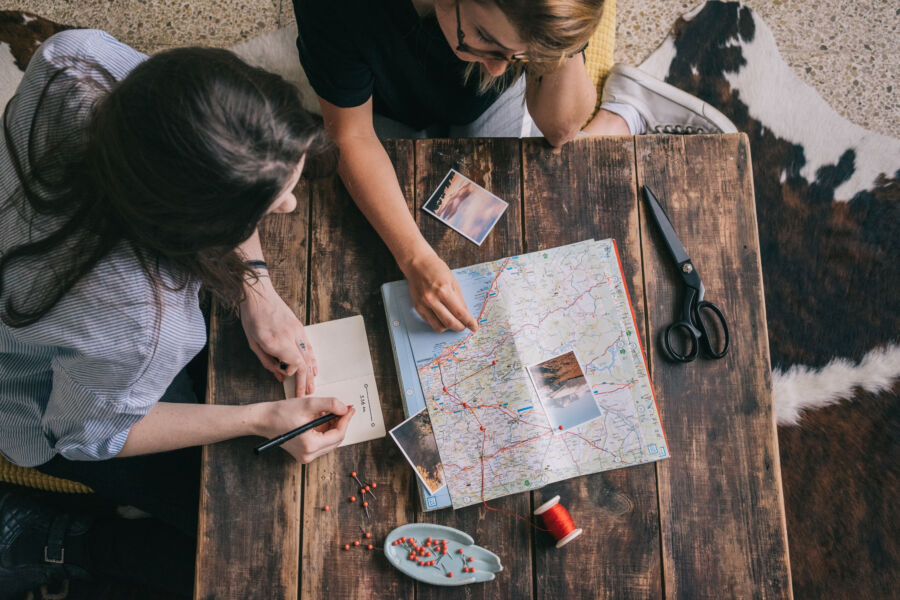
Safety is key on a cross-country road trip. You’ll want to prep your vehicle before hitting the road. Get a tune-up, check the tires, and pack an emergency kit with jumper cables and a first-aid kit.
Travel insurance is smart to consider. It can cover medical issues, trip cancellations, and even roadside assistance. Shop around for policies that fit your needs and budget.
Let someone back home know your route and check in regularly. Share your location with a trusted friend or family member using your phone. It’s an easy way to stay connected.
Be smart about where you stay. Read reviews for hotels and campgrounds. Pick well-lit areas and trust your gut if a place feels sketchy. Keep valuables out of sight in your car.
Bring some cash, but use credit cards for most purchases. They’re safer than carrying lots of money. Just tell your bank you’re traveling so they don’t freeze your card.
Pack a portable charger for your phone. You don’t want to get stranded with a dead battery. And download offline maps in case you lose cell service in remote areas.
Stay alert on long drives. Take breaks every couple hours to stretch your legs and grab a snack. Switch drivers if you’re traveling with others. A tired driver is a dangerous driver.
Capturing Memories

A cross-country road trip isn’t just about the miles you cover—it’s about the moments you collect along the way. You’ll want to preserve those memories for years to come. Here are some easy ways to capture your great American road trip:
Snap lots of photos! Use your phone or a real camera to document the sights. Don’t forget to take pics of:
• Quirky roadside attractions
• Beautiful landscapes
• Your travel buddies having fun
• Local food and drinks you try
Keep a travel journal. Jot down your thoughts, funny stories, and favorite moments each day. It’s a great way to remember the little details you might forget later.
Collect small souvenirs. Grab postcards, stickers, or little knick-knacks from places you visit. They make fun mementos without taking up too much space.
Make a playlist. Create a soundtrack for your trip with songs that remind you of different places or experiences. Music can be a powerful memory trigger.
Try your hand at sketching. Even if you’re not an artist, quick doodles can capture the essence of a place in a unique way.
Don’t forget to actually enjoy the moment too! Sometimes it’s worth putting the camera down and just soaking in the experience. Your memories are the best souvenir of all.
Travel Considerations for Unique Landscapes
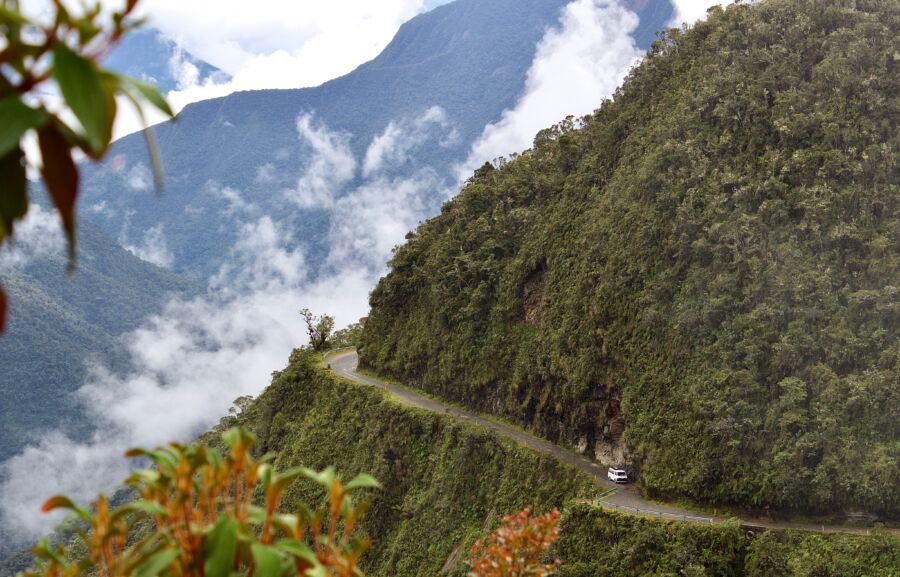
A cross-country road trip lets you experience America’s diverse landscapes up close. From coastal highways to bustling cities to quiet country roads, each region offers its own charms and challenges.
Cruising the Coastal Roads
The Pacific Coast Highway offers breathtaking ocean views, but watch out for tight turns and steep cliffs. Pack motion sickness meds if you’re prone to carsickness. Plan extra time for photo stops at spots like Big Sur.
Gas prices tend to be higher along the coast, so budget accordingly. Consider renting a convertible to fully enjoy the sea breeze, but bring layers – coastal weather can change quickly.
In towns like Monterey, parking can be tricky. Look for public lots on the outskirts and walk or take shuttles into town. Book coastal accommodations early, especially in summer when prices spike.
City driving brings its own set of challenges. In places like New York City, Chicago, and Los Angeles, traffic jams can eat up hours of your day. Plan routes to avoid rush hour if possible.
Parking in cities is expensive – budget $20-40 per day for garages. Consider staying outside the city center and taking public transit in. Many cities offer visitor passes for subways and buses that can save you money.
City tolls add up fast. Get an E-ZPass before your trip to save time and cash. And don’t forget to factor in those pricey bridge and tunnel fees!
Adventuring Through the Heartland and Southern Charm
The wide-open spaces of America’s heartland mean long stretches between stops. Make sure your car is in good shape before tackling states like Oklahoma and Texas. Carry extra water and snacks.
In rural areas, gas stations can be far apart, so don’t let your tank get below a quarter full. Cell service can be spotty too, so bring paper maps as backup.
In the South, small-town charm awaits in places like Savannah and St. Augustine. But be ready for sudden summer thunderstorms. Pack an umbrella and have a rainy day plan for outdoor activities.
Book unique local experiences to really get a taste of Southern hospitality. From food tours to ghost walks, these add color to your trip without breaking the bank.
